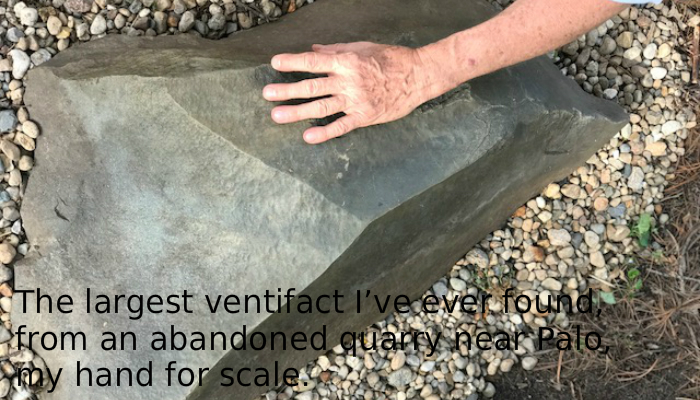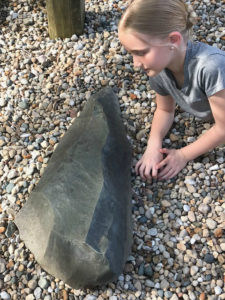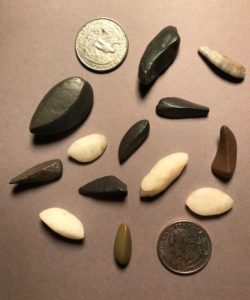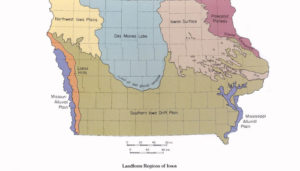Ventifacts: Signature of Our Ancient Wind

Spring was typically breezy this year, and folks who measure available wind energy in the Midwest usually find April to be our most energetic month. And when I was a kid, everybody knew this because that’s when you flew kites. Given some of the clunky creations we made back then, from newspaper and sticks, we needed a serious breeze to get airborne.
Ancient winds have left their footprints in the geologic record in many ways. More than a century ago, naturalists and geologists recognized that there were distinctively shaped rocks with “facets” cut into them, sometimes only one, sometimes two or three or four. These were usually found on sandy surfaces with little vegetation and it was supposed that millennia of windblown sand had sandblasted the rocks to create these planar surfaces. Multiple facets were imagined to represent situations where the sand beneath a rock had been blown away on one side and the rock had tipped into the blowout and exposed new portions of its anatomy to the sandblaster.
While this was an eminently reasonable hypothesis, the real confirmation came with the exploration of the Dry Valleys of Antarctica. These are a group of frozen valleys not occupied by glaciers, paved mostly with rocks and sand, too cold for much vegetation, and with strong winds most of the year. And ventifacts are being created there today. Studies with wind gauges, measured rocks, moved rocks, painted rocks, etc., extrapolate out to indicate that they do take thousands of years to form.
In one unique situation there, the permanently frozen carcass of a seal was found miles inland. Its frozen head had been sculpted into a ventifact. Carbon dating determined that the seal had died several thousand years ago.
Although I was a participant at the Institute for Polar Studies at Ohio State University during my graduate student days in the 1960s, I never went to Antarctica. But intrigued by the stories that faculty and students brought back, I decided to experiment with the ventifact process. I built a wind tunnel from plywood and an industrial fan. I made “rocks” from soft plaster and embedded them in a layer of fine sand in the floor of the tunnel, and fed very fine sand into the wind from a bucket operating like an hourglass. By tinkering with variables, I could “carve” a plaster ventifact in a few weeks, which looked rather similar to real ones.
The reason I mention ventifacts is that they can also be found in Iowa. More than a century ago geologists recognized a unique landform, which they labeled the Iowan Surface.
Much of this landform has an irregular and relatively thin windblown silt (loess) cover, and below this there is often a thin carpet of pebbles resting on sandy glacial sediment. Some of these pebbles have been shaped into ventifacts, which range in size from walnuts to wheelbarrows. Much of their loess cover ranges in age from 10,000-30,000 years old, and we know from local evidence that around here 20,000 years ago it was very cold. For example, Sandy Rhodes found fossils of the red-backed vole (aka the lemming) and dwarf birch, typical of the arctic today, at the Conklin Quarry on the north edge of Iowa City. And only a few hundred yards away, at about the same 20,000 year-old horizon, I found sand wedges that were the fossil remnants of permafrost. So we had the right ingredients on the Iowan Surface during those times – a sandy surface containing rocks, and skimpy vegetation. And the ventifacts say that the wind was also an important player.

A large ventifact from northern Johnson County, child for scale.

A handful of small local ventifacts.
So if you are out and about on the Iowan Surface and encounter a nice exposure of the “stone line” in a road cut or cellar hole, take a close look at the shapes of the pebbles and cobbles. They might tell you a story.



